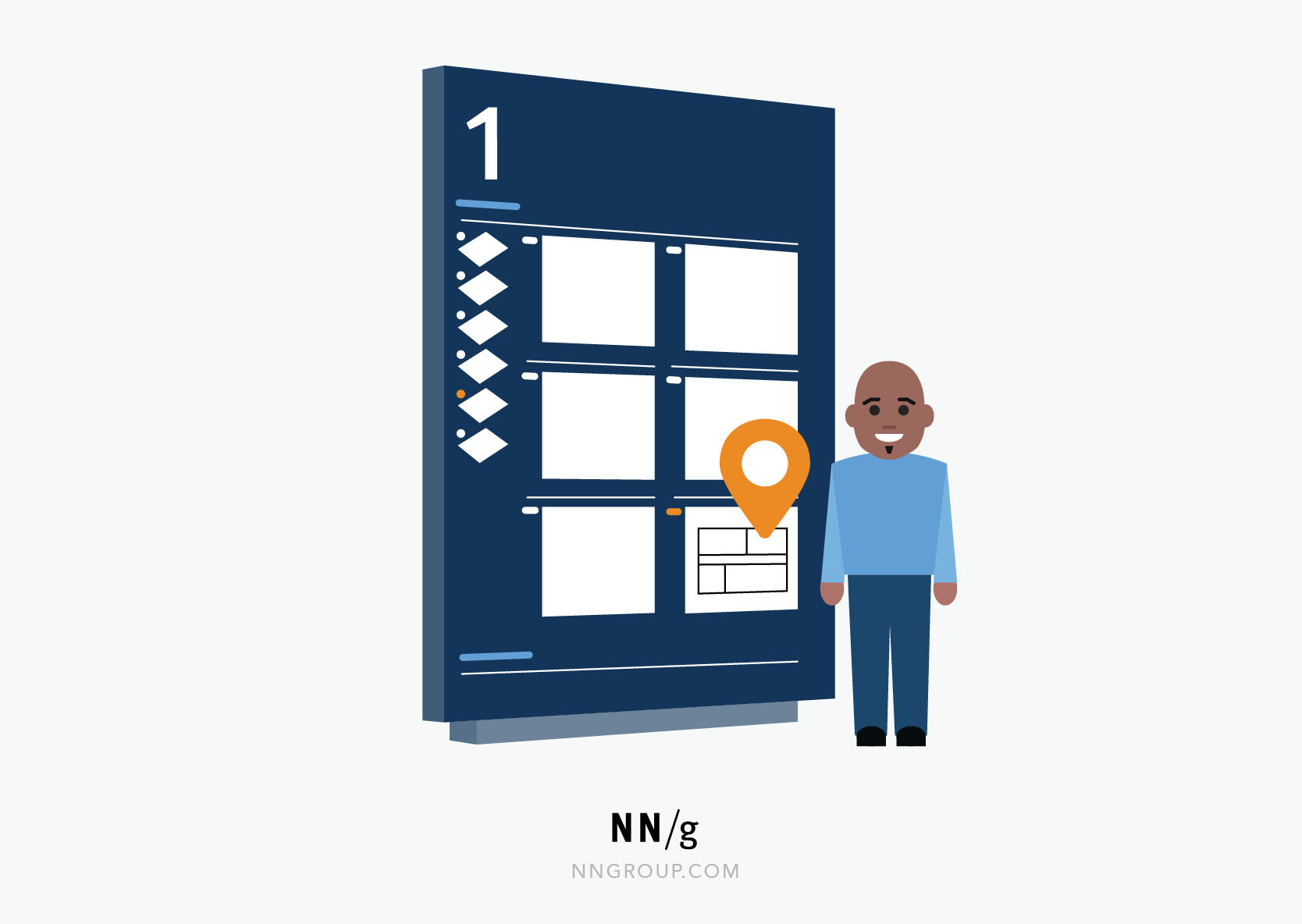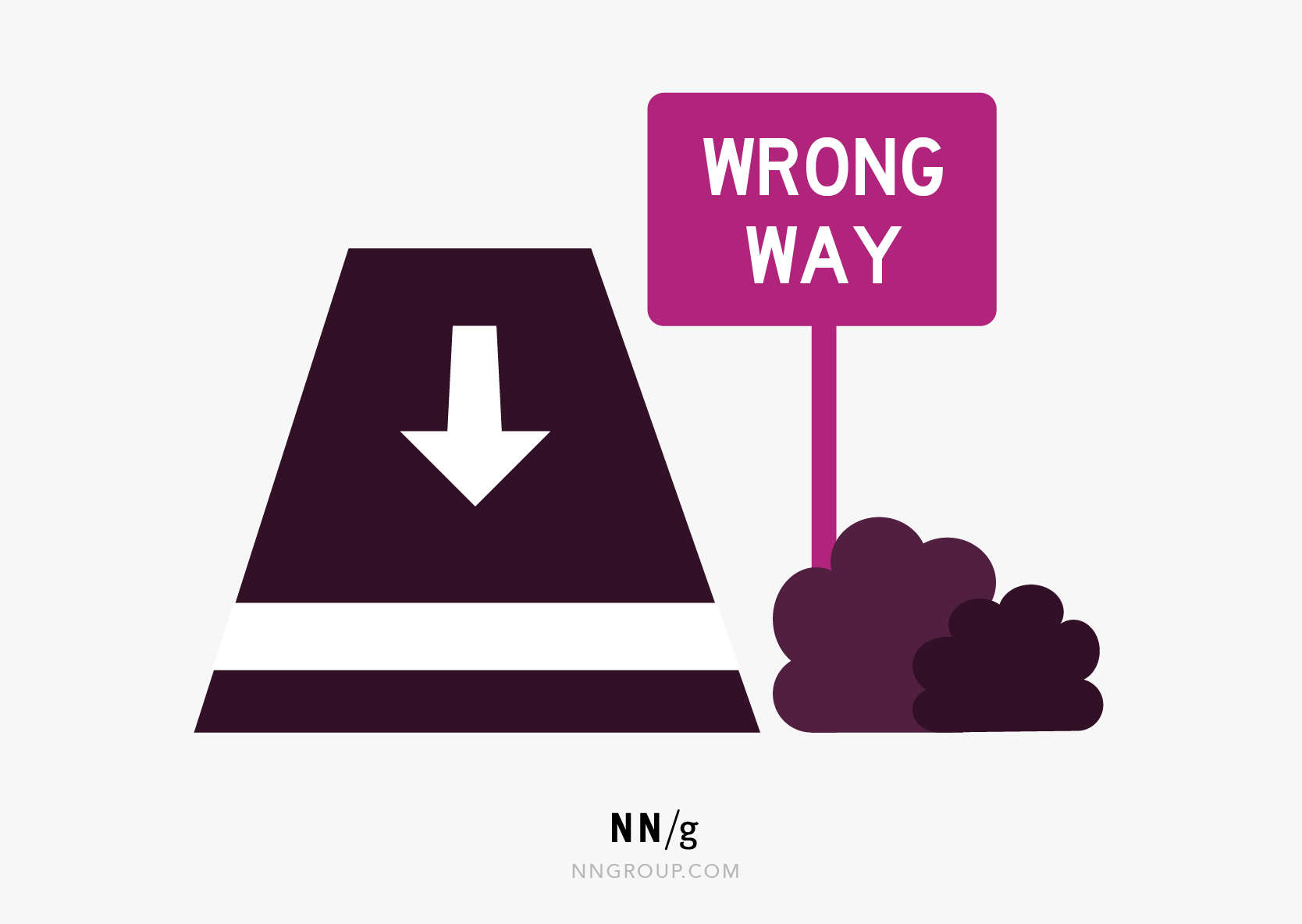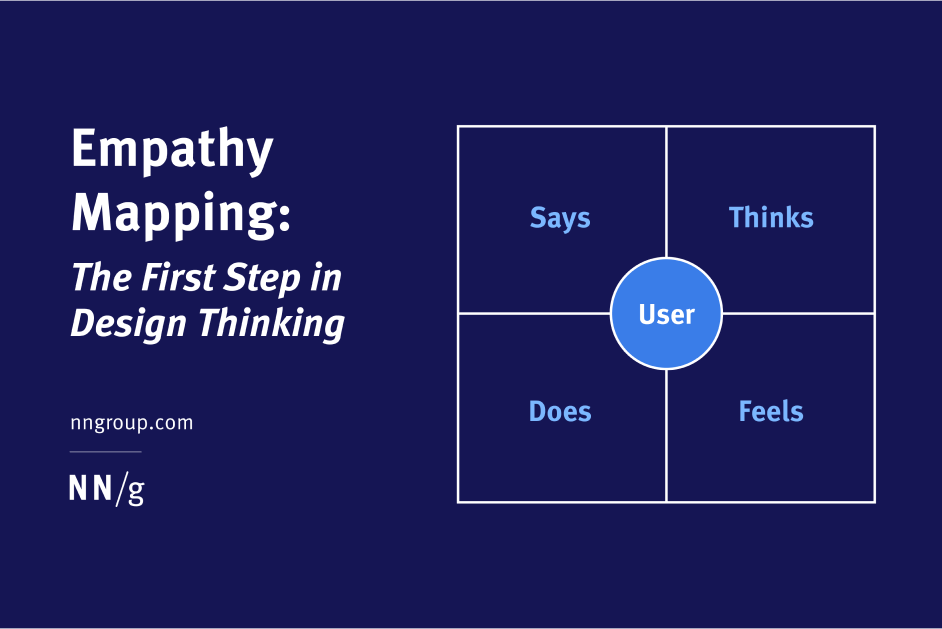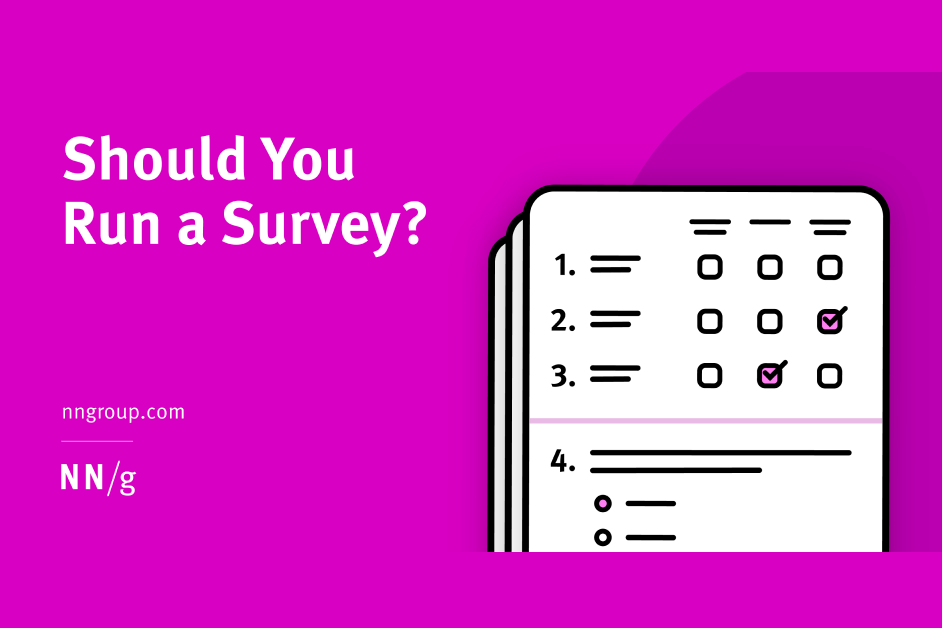
Summary: Jakob Nielsen's 10 general principles for interaction design. They are called "heuristics" because they are broad rules of thumb and not specific usability guidelines.
Thank you to Kelley Gordon for designing the visuals and posters included in this article.
Thank you to Kate Moran and Feifei Liu for updating the heuristic names, descriptions, and examples.
In This Article
1: Visibility of System Status
The design should always keep users informed about what is going on, through appropriate feedback within a reasonable amount of time.
When users know the current system status, they learn the outcome of their prior interactions and determine next steps. Predictable interactions create trust in the product as well as the brand.

Tips
- Communicate clearly to users what the system’s state is — no action with consequences to users should be taken without informing them.
- Present feedback to the user as quickly as possible (ideally, immediately).
- Build trust through open and
Learn more
- Full article: Visibility of System Status
- 3-minute video about the Visibility Heuristic
2: Match Between the System and the Real World
The design should speak the users' language. Use words, phrases, and concepts familiar to the user, rather than internal jargon. Follow real-world conventions, making information appear in a natural and logical order.
The way you should design depends very much on your specific users. Terms, concepts, icons, and images that seem perfectly clear to you and your colleagues may be unfamiliar or confusing to your users.
When a design’s controls follow real-world conventions and correspond to desired outcomes (called natural mapping), it’s easier for users to learn and remember how the interface works. This helps to build an experience that feels intuitive.

Tips
- Ensure that users can understand meaning without having to go look up a word’s definition.
- Never assume your understanding of words or concepts will match that of your users.
- User research will uncover your
Learn more
- Full article: Match Between the System and the Real World
- 2-minute video: Match Between the System and the Real World
3: User Control and Freedom
Users often perform actions by mistake. They need a clearly marked "emergency exit" to leave the unwanted action without having to go through an extended process.
When it's easy for people to back out of a process or undo an action, it fosters a sense of freedom and confidence. Exits allow users to remain in control of the system and avoid getting stuck and feeling frustrated.

Tips
- Support Undo and Redo.
- Show a clear way to exit the current interaction, like a
- Make sure the exit is clearly labeled and discoverable.
Learn more Tips
Learn more
- Full article: User Control and Freedom
- 2-minute video: User Control and Freedom
4: Consistency and Standards
Users should not have to wonder whether different words, situations, or actions mean the same thing. Follow platform and industry conventions.
Jakob's Law states that people spend most of their time using digital products other than yours. Users’ experiences with those other products set their expectations. Failing to maintain consistency may increase the users' cognitive load by forcing them to learn something new.

Tips
- Improve
- Maintain
- Follow established
Learn more
- Full article: Consistency and Standards
- 3-minute video: Consistency and Standards
5: Error Prevention
Good error messages are important, but the best designs carefully prevent problems from occurring in the first place. Either eliminate error-prone conditions, or check for them and present users with a confirmation option before they commit to the action.
There are two types of errors: slips and mistakes. Slips are unconscious errors caused by inattention. Mistakes are conscious errors based on a mismatch between the user’s mental model and the design.

Tips
- Prioritize your effort: Prevent high-cost errors first, then little frustrations.
- Avoid slips
- Prevent mistakes by removing memory burdens, supporting undo, and
Learn more
- Full article: Preventing User Errors
- 3-minute video: Error Prevention
6: Recognition Rather than Recall
Minimize the user's memory load by making elements, actions, and options visible. The user should not have to remember information from one part of the interface to another. Information required to use the design (e.g. field labels or menu items) should be visible or easily retrievable when needed.
Humans have limited short-term memories. Interfaces that promote recognition reduce the amount of cognitive effort required from users.

Tips
- Let people recognize information in the interface, rather than forcing them to remember (“recall”) it.
- Offer
- Reduce the information that users have to remember.
Learn more
- Full article: Recognition vs. Recall in UX
- 3-minute video: Recognition vs. Recall
7: Flexibility and Efficiency of Use
Shortcuts — hidden from novice users — may speed up the interaction for the expert user so that the design can cater to both inexperienced and experienced users. Allow users to tailor frequent actions.
Flexible processes can be carried out in different ways, so that people can pick whichever method works for them.

Tips
- Provide
- Provide
- Allow for
Learn more
- Full article: Flexibility and Efficiency of Use: The 7th Usability Heuristic Explained
- 3-minute video: Flexibility and Efficiency of Use
8: Aesthetic and Minimalist Design
Interfaces should not contain information that is irrelevant or rarely needed. Every extra unit of information in an interface competes with the relevant units of information and diminishes their relative visibility.
This heuristic doesn't mean you have to use a flat design — it's about making sure you're keeping the content and visual design focused on the essentials. Ensure that the visual elements of the interface support the user's primary goals.

Tips
- Keep the
- Don't let unnecessary elements distract users from the information they really need.
- Prioritize the content and features
Learn more
- Full article: Aesthetic and Minimalist Design (Usability Heuristic #8)
- 3-minute video: Aesthetic and Minimalist Design
9: Help Users Recognize, Diagnose, and Recover from Errors
Error messages should be expressed in plain language (no error codes), precisely indicate the problem, and constructively suggest a solution.
These error messages should also be presented with visual treatments that will help users notice and recognize them.

Example of Usability Heuristic #9:Wrong waysigns on the road remind drivers that they are heading in the wrong direction and ask them to stop.
Tips
- Use traditional
- Tell users what went wrong in
- Offer users a solution, like a shortcut that can solve the error immediately.
Learn more
- Full article: Error-Message Guidelines
- 2-minute video: Helping Users Overcome Errors
10: Help and Documentation
It’s best if the system doesn’t need any additional explanation. However, it may be necessary to provide documentation to help users understand how to complete their tasks.
Help and documentation content should be easy to search and focused on the user's task. Keep it concise, and list concrete steps that need to be carried out.

Tips
- Ensure that the help documentation is easy to
- Whenever possible, present the documentation in context right at the moment that the user requires it.
- List concrete steps to be carried out.
Learn more
- Full article: Help and Documentation: The 10th Usability Heuristic
- 3-minute video: Help and Documentation
Free 10 Heuristics Poster
Download a free summary poster or 10 detailed posters of the 10 Usability Heuristics, designed by Kelley Gordon, Kate Moran, and Feifei Liu.

Download and print our free usability heuristic posters. Hang them at home, in your office, or gift them to a colleague.
Note from Jakob
I originally developed the heuristics for heuristic evaluation in collaboration with Rolf Molich in 1990 [Molich and Nielsen 1990; Nielsen and Molich 1990]. Four years later, I refined the heuristics based on a factor analysis of 249 usability problems [Nielsen 1994a] to derive a set of heuristics with maximum explanatory power, resulting in this revised set of heuristics [Nielsen 1994b].
In 2020, we updated this article, adding more explanation, examples, and related links. While we slightly refined the language of the definitions, the 10 heuristics themselves have remained relevant and unchanged since 1994. When something has remained true for 26 years, it will likely apply to future generations of user interfaces as well.
See Also
Examples
- 10 Usability Heuristics Applied to C
- 10 Usability Heuristics Applied to Virtual Reality
- 10 Usability Heuristics Applied to Video Games
- 10 Usability Heuristics Applied to Everyday Life
Checklists & Guidelines
- Full set of
- Bruce "Tog" Tognazzini's list of
References
Molich, R., and Nielsen, J. (1990). Improving a human-computer dialogue, Communications of the ACM 33, 3 (March), 338-348.
Nielsen, J., and Molich, R. (1990). Heuristic evaluation of user interfaces, Proc. ACM CHI'90 Conf. (Seattle, WA, 1-5 April), 249-256.
Nielsen, J. (1994a). Enhancing the explanatory power of usability heuristics. Proc. ACM CHI'94 Conf. (Boston, MA, April 24-28), 152-158.
Nielsen, J. (1994b). Heuristic evaluation. In Nielsen, J., and Mack, R.L. (Eds.), Usability Inspection Methods, John Wiley & Sons, New York, NY.
Tags
Bài viết liên quan
Bài viết nổi bật
.png)


